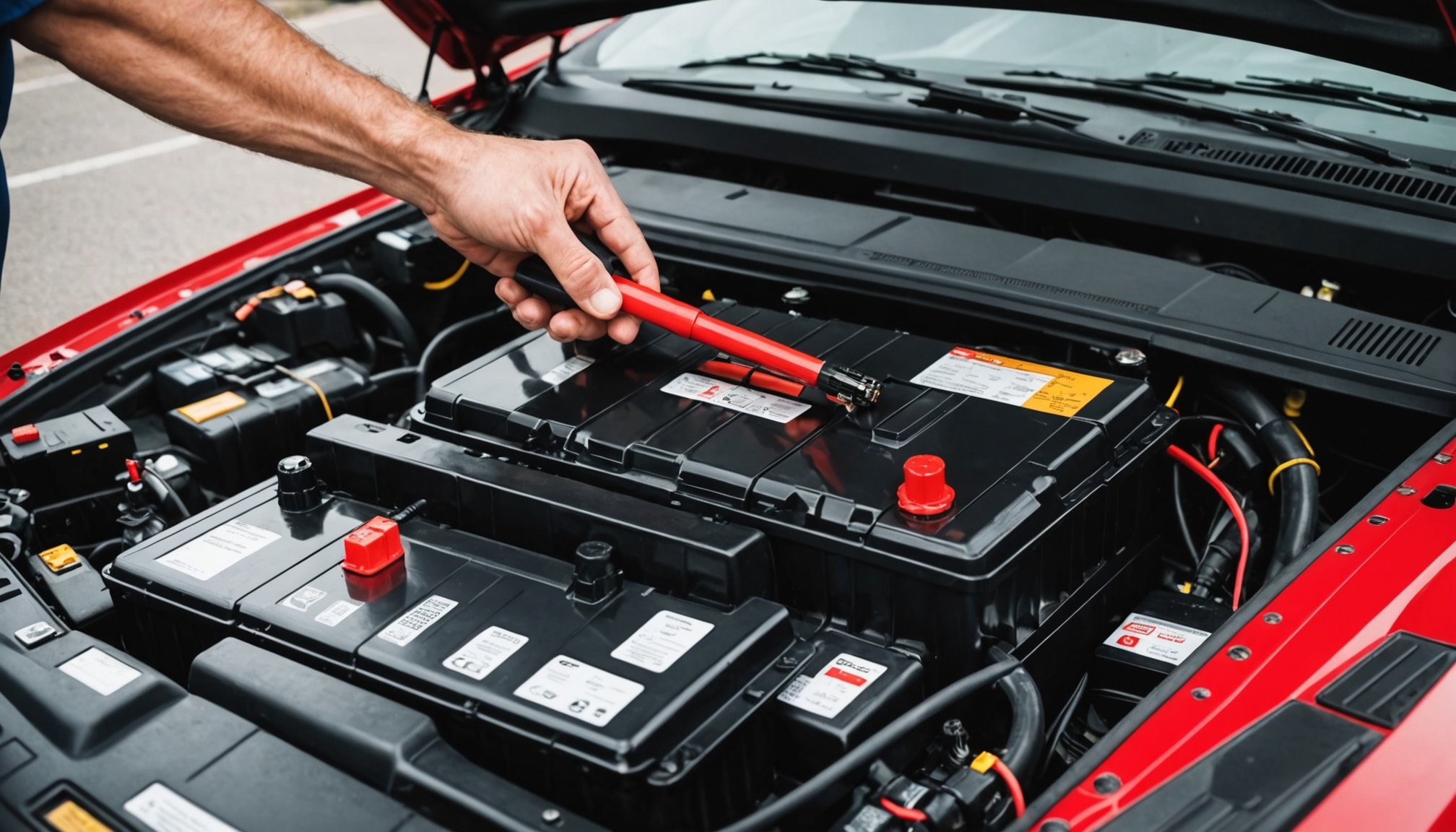Your car’s battery is one of the most crucial components of your vehicle. It provides the electrical power required to start the engine and powers various electrical systems while the engine is running. Over time, batteries can wear out or fail, leading to frustrating situations where your vehicle won’t start when you need it. In this article, we will explore the common signs that indicate your battery may be nearing the end of its life and needs replacement. By understanding these warning lights and symptoms, you can avoid being stranded and ensure your vehicle operates smoothly.
Understanding the Basics of Car Batteries
Your car’s battery is a rechargeable power source that converts chemical energy into electrical energy. Most modern vehicles use a lead-acid battery, which consists of lead plates and sulfuric acid. When you turn the ignition key, the battery sends a surge of electrical energy to the starter motor, initiating the engine’s operation.
This might interest you : Step-by-Step Guide to Troubleshooting and Fixing Faulty Electric Windows in UK Vehicles
As time goes on, batteries naturally degrade due to various factors such as temperature fluctuations, driving habits, and the frequency of short trips. A battery typically lasts between three to five years, but this can vary significantly based on how well it is maintained and the conditions in which the vehicle operates.
It’s essential to regularly check the battery for any signs of wear, corrosion, or damage. Neglecting your battery’s health can lead to unexpected problems, especially during extreme weather conditions when battery performance may be severely affected. Another critical aspect to consider is that your battery’s ability to hold a charge decreases over time. Regular checks can help you spot issues before they lead to a complete failure.
Also to see : Ultimate Guide to Soundproofing Your Car Cabin in the UK: Tips for a Quieter Ride
In the following sections, we will delve deeper into the specific symptoms you may encounter, enabling you to take proactive measures to ensure your vehicle remains reliable.
Physical Signs of Battery Wear
When examining your car’s battery, look for physical signs that may indicate it needs attention. One of the most common indicators is corrosion on the battery terminals. This corrosion appears as a white, ashy substance that can obstruct the connection between the battery and the vehicle’s electrical system. If left unchecked, this can lead to a weak connection and cause starting issues.
Another physical sign to consider is the condition of the battery case itself. If you notice any cracks, bulges, or leaks, it is a clear indication that the battery is failing. A damaged battery case can lead to a complete loss of power and may even pose safety risks due to potential leakage of harmful substances.
Moreover, if your battery is older than three years, it may be beneficial to inspect it regularly for these physical signs. While some vehicles may show these symptoms sooner, a battery’s age can often be a reliable predictor of its condition. If you see any of the aforementioned signs, it’s advisable to have the battery tested or replaced before it fails completely.
Additionally, you should be attuned to any unusual smells around the battery. A rotten egg smell can indicate a leaking battery, which is hazardous and should be addressed immediately. If you observe any of these signs, it’s best to consult a professional mechanic to evaluate the situation and determine if replacement is necessary.
Electrical Issues and Warning Lights
Another critical area to monitor for signs that your battery may need replacement involves the vehicle’s electrical systems. If you notice dimming headlights or interior lights, this could be a sign that the battery is struggling to provide adequate power. Additionally, if the lights flicker when you start the engine or if they seem unusually bright or dull, these are clear indicators that something is amiss with your battery or the electrical system.
You may also encounter dashboard warning lights that signal battery issues. The battery warning light, along with the check engine light, can indicate that your vehicle is experiencing electrical problems. Don’t ignore these warning signs; they are your car’s way of communicating that something needs to be checked. If you see these lights illuminate, it’s essential to address the issue promptly to avoid being left stranded.
Furthermore, if your car has difficulty starting, such as a slow crank when you turn the key, this is often a strong indicator that your battery is losing its ability to hold a charge. If you find that you have to turn the key more than once or wait before starting, it’s worth investigating the battery’s health.
Lastly, if you have recently had to jump-start your car multiple times, this is a significant sign that your battery needs to be checked or replaced. Frequent jump-starting is not a sustainable solution and can lead to more significant issues down the line, including damaging other electrical components in your vehicle.
Testing Your Battery’s Condition
Once you identify potential symptoms of battery issues, it’s crucial to test the battery’s condition. Many auto parts stores offer free battery testing services, and it’s a good idea to take advantage of these offers. They will typically use a multimeter to check the voltage and can provide a reading that helps determine if your battery is still holding a proper charge.
A healthy battery should generally read around 12.6 volts or more when the engine is off. If the reading drops below 12.4 volts, your battery may be in decline. When the engine is running, a reading between 13.7 to 14.7 volts indicates that the battery is being charged correctly. If the voltage is lower than this range, there may be issues with the alternator or the battery itself.
In addition to voltage checks, a load test can be beneficial. This test simulates conditions when you start the car, determining if the battery can deliver the necessary current under load. If your battery fails the load test, it is time for a replacement.
Regular maintenance and testing are key to prolonging your battery’s life. Make it a habit to check for corrosion, clean the terminals, and ensure that the battery is securely mounted. If you are unsure about performing these tests yourself, don’t hesitate to seek help from a professional mechanic who can provide a thorough assessment.
Understanding the signs that your car’s battery needs to be replaced can save you from the inconvenience of a dead car when you least expect it. By being attentive to physical symptoms like corrosion, electrical issues like dim lights, and conducting regular tests, you can maintain your vehicle’s reliability. Remember, regular checks and preventative maintenance can extend the life of your battery and ensure your vehicle remains ready to go when you are. If you recognize any of the warning signs discussed in this article, do not wait to take action. A proactive approach can make all the difference in your vehicle’s performance.











